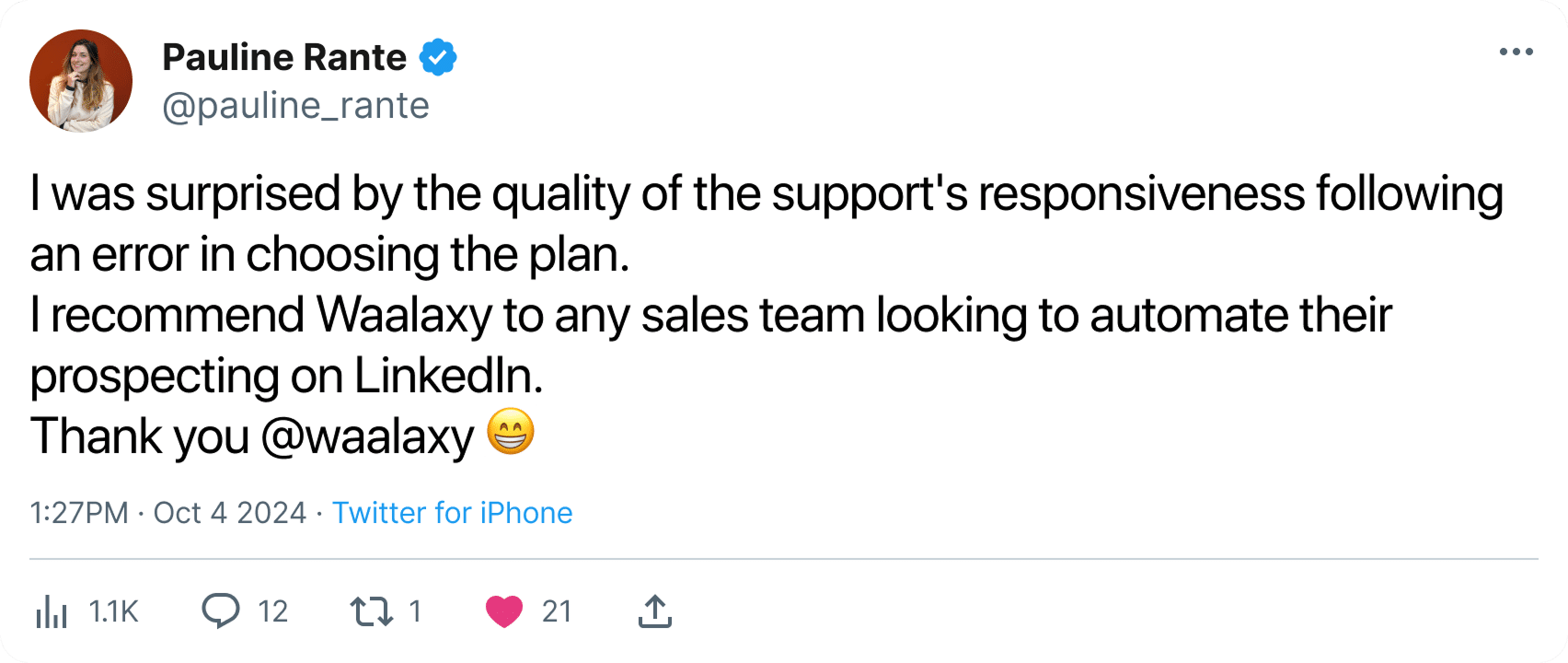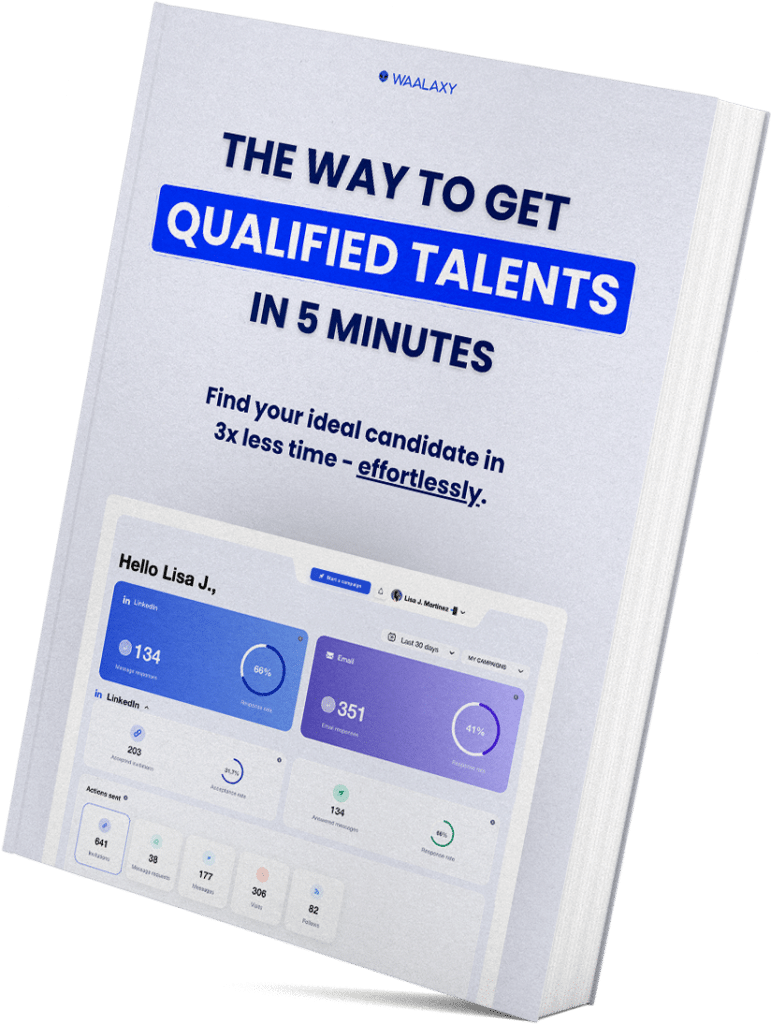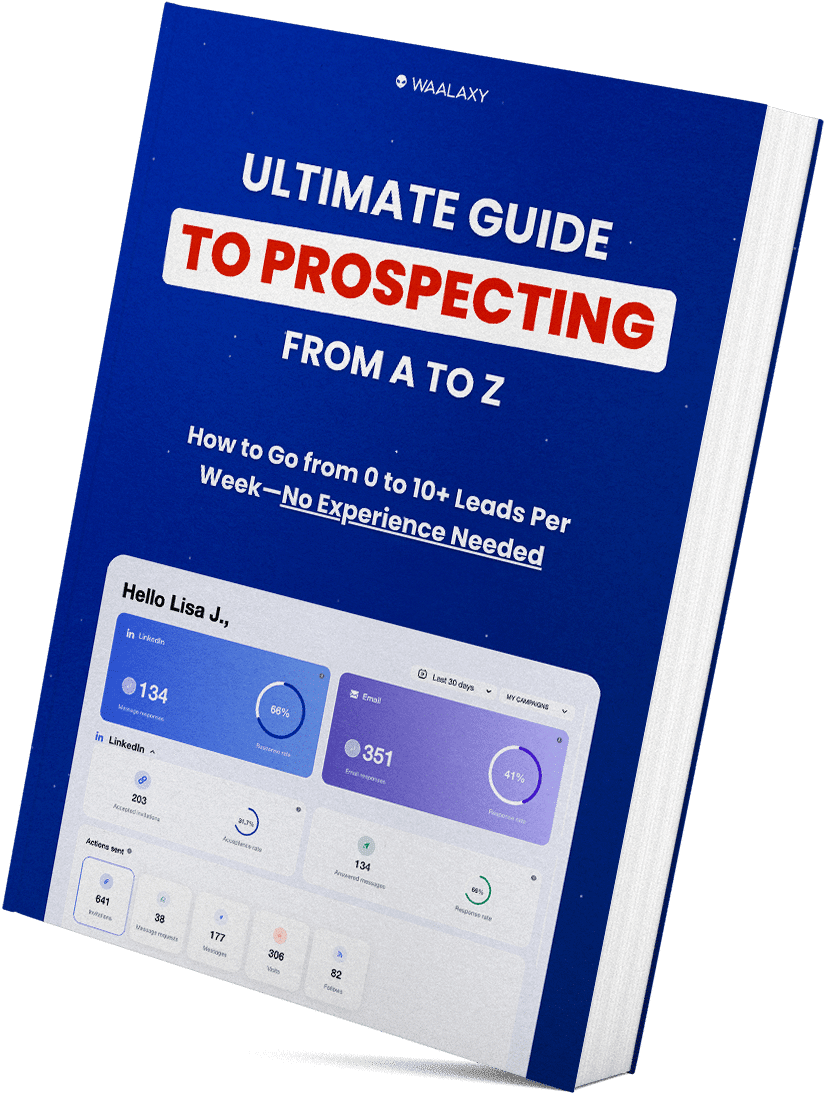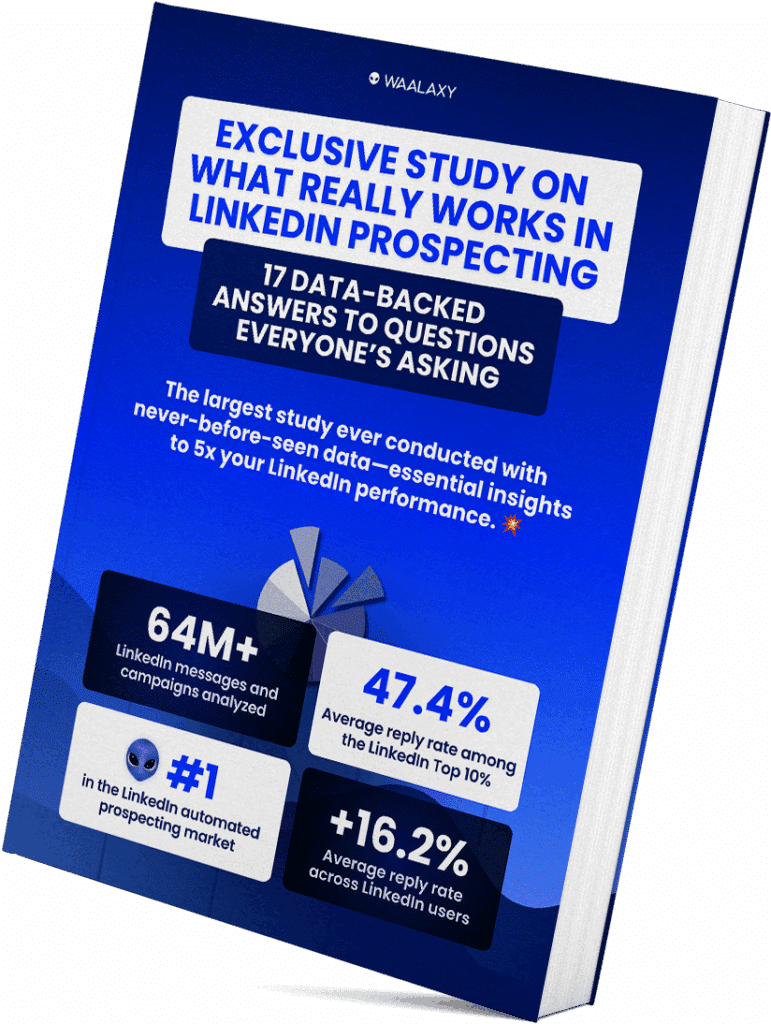Persuasive marketing is what makes you click, without really knowing why.
A LinkedIn post that piques your curiosity, a landing page that promises “free, no credit card required”, or a well-placed button, and you’re already taking action.
None of this happens by chance. It’s the result of psychological techniques designed to influence your decisions. 🧠
The good news is that you can do the same!
Here, we’re going to understand how your prospect thinks and, above all, make him want to move forward.
On the program:
- What is persuasive marketing?
- Why is it so effective?
- How to use it in practice, thanks to two powerful cognitive biases.
Ready to master the art of getting someone to say yes, even if they swore they’d say no? 👀
(Reading time: 3 minutes.)
What is persuasive marketing?
Persuasive marketing is the ease of using psychological mechanisms to influence your prospects‘ decisions, while leaving them with the impression that they are choosing. 😏
It involves:
- A tagline that piques curiosity.
- A button in the right place, with the right words.
- An offer presented in such a way as to reassure rather than raise doubts.
Persuasive is a cocktail of storytelling, design, copywriting and psychology.
And no, it’s not reserved for famous marketing “gurus” or giant brands.
Today, even a B2B startup or freelancer can use these techniques to boost conversions, improve customer journeys and, above all, better guide their users.
The key is to understand how the human brain works and adapt your message accordingly. 🧠
The difference between persuasive and manipulation
When it comes to persuasive marketing, the same question always comes up.
Isn’t that a bit manipulative? 🤔
Sure, it’s based on emotions, cognitive biases and human reactions.
But the difference is simple, the intention is not the same:
Manipulation hides a truth, forces a decision and influences choices in the seller’s favor.
Persuasive highlights the right decision for the user, in a clear, honest and unforced way.
Here’s a small example to illustrate what we mean:
- 🔵 Manipulation ⭢ Only one spot left (when it’s not true).
- 🔵 Persuasive ⭢ More than 12,000 users already trust us.
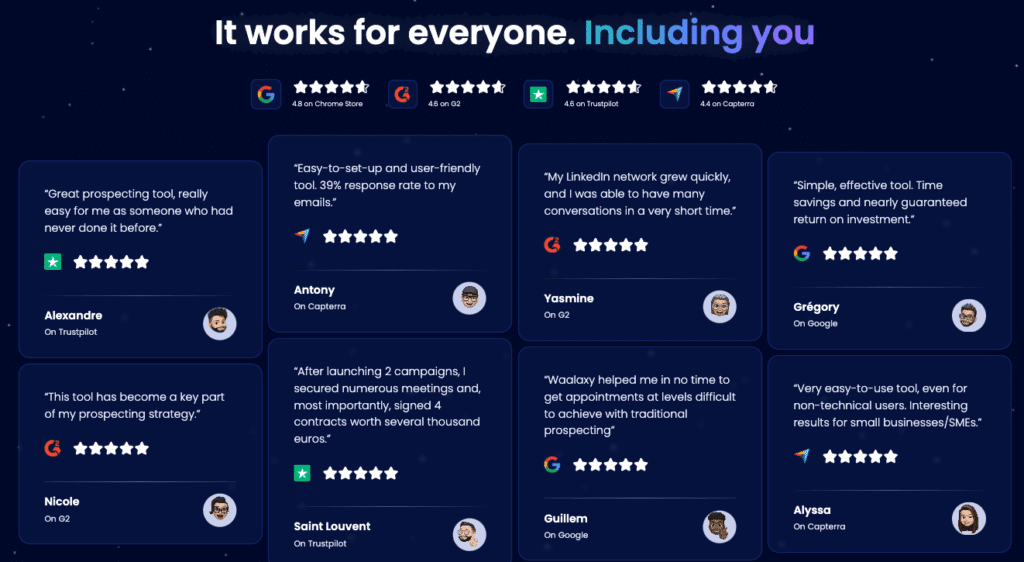
In both cases, you influence, but in the second, you reassure, guide and, above all, respect.
Okay, stop comparing your toxic ex to this kind of marketing 👀
Why use persuasive in your marketing strategy?
You may have a good offer, a good product, a good landing, but if your conversions stagnate, you won’t be able to increase your sales.
You don’t need to pull out all the stops, just activate the right levers at the right time. 😇
1) Grab attention in the first few seconds
On LinkedIn, in a newsletter or on a landing page, you often have less than 3 seconds to convince someone to stay (believe me, that’s really not much time 😅 ).
That’s the way the human brain works. It scrolls, it filters, it zaps (like our long scrolling sessions on Instagram). 📲
If your message doesn’t catch on right away, it’s already too late.
Thanks to certain cognitive biases like the framing effect (I’ll tease you but we’ll talk about it below 🤫), you can formulate your message to grab 🧲 attention immediately.
For example:
- ❌ Try our CRM tool.
- ✅ Still wasting time reminding your prospects? Here’s what we’ve designed for you.
The content hasn’t changed, but the form has.
2) Encouraging people to act
Getting attention is great, but it’s only the first step.
What we want is for the prospect to take action (click, register, book a demo, buy, etc.).
That’s where our best buddies come in, aka, the psychological levers:
- Urgency ⇒ offer valid until tonight.
- Rarity ⇒ limited seating.
- The social proof ⇒ 8,000 users won over.
These triggers activate mental shortcuts.
Basically, they push you to act now, not later.
But be careful not to come across as a carpetbagger. 😅
That’s why we write an impactful message and a clear proposition that helps trigger that little “click”. 👀
3) Help your prospects better understand value
You may have the best offer on the market, but if your prospect doesn’t understand what’s in it for them, they’ll leave. 🛫
Our brains automatically make quick decisions based on simple clues.
Don’t worry, this is where persuasive comes into play, helping you to highlight the value of your product:
- ❌ All-in-one CRM solution.
- ✅ Don’t lose any more deals because you forgot to dun.
As a result, your prospect sees what you can do for him, without having to think about it. 👏🏼
4) Encourage users to follow through
You’ve grabbed attention, your prospect clicks, starts to sign up, but gives up at step 2. 🥲
He’s lost the thread, or had a micro-doubt.
Admittedly, we’re fans of the quote “where there’s a doubt, there’s no doubt”, but still.
Why? 🤔
Because the perceived effort is stronger than the motivation of the moment.
That’s why there are simple levers you can use to keep your prospect on your toes, such as :
- Clear steps.
- A fluid path.
- Buying signals that tell the user he’s “almost there”.
A simple message like “Only one step left to finalize your account” can be enough to prevent abandonment.
The main psychological principles of persuasive
Persuasive is not a stroke of luck, nor is it a gift reserved for salespeople who know how to talk.
It’s more a question of understanding the human brain. 🧠
Surely you’re aware that there are dozens of mental biases that influence our choices without us realizing it.
The good news is that you don’t need a PhD in neuropsychology to use them. 😅
Just continue with the article, as we introduce you to two biases you can easily integrate into your content:
- The framing effect.
- The goal gradient effect.
Spoiler, you’ve probably already fallen victim to them… But you’ll love using them too! 😏
The framing effect
Take a half-full or half-empty bottle. 🧴
It’s the same bottle, but depending on how you present it, the perception changes.
This is called the framing effect. ✨
The way you formulate information directly influences the decision we make.
For example:
- ❌ 30% of your users abandon the registration.
- ✅ 70% of your users complete the registration.
Chloé Dalger, our Head of Growth, explains in this LinkedIn post. 👇🏼

In copywriting, emailing, your product pages or even your calls to action, the framing effect can transform a neutral message into one that makes people react. 😲
To do this, always ask yourself: ⤵
Does the way I present this information really help in making a decision? 🤔
The goal gradient effect
Are you more motivated to finish something when the end is near?
It’s called the goal gradient effect, a psychological bias that causes people to accelerate their effort as they get closer to a goal. 🎯
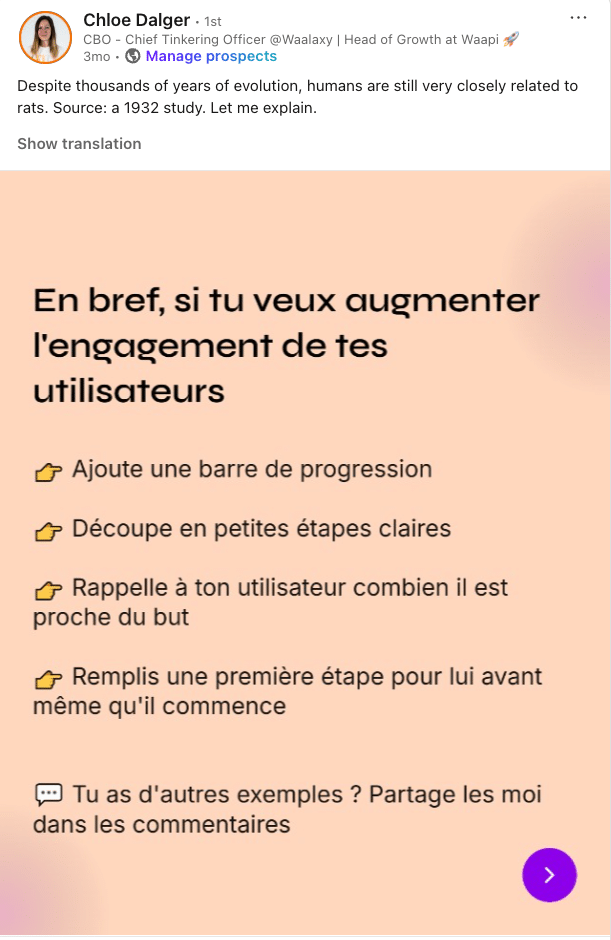
For example:
A user starts his onboarding. If he sees “step 1 of 4: profile creation” and a progress bar that advances with each action, he’ll be highly motivated to finish onboarding.
Why does it work? The user visualizes the path and his brain needs to complete the missing step.
Okay, but how do you use it in your strategy? 🤔
Simple:
- Add a progress bar to your tunnels (step 2 of 3).
- Show how close you are to your goal (only 1 click left to finalize your registration).
- Highlight the steps you’ve already taken (you’ve already set up 80% of your account).
How can you apply persuasive marketing to your strategy?
Now that you’ve understood the main principles, you’re probably asking yourself “okay but, where do I start? 🤔”.
Well, start by reading these 4 steps. 👇🏼
1) Understand what’s blocking your users
First and foremost, you need to know why your users aren’t acting.
Sometimes, it’s not a problem of wording, design or offer. It’s just that something’s stuck in their heads, and your job is to find out why! 🫵🏼
Ask yourself the following questions:
- At what point in my tunnel do people drop out?
- Do they understand what’s being proposed?
- Do they feel hesitant, doubtful or mentally overwhelmed?
- Do they really have a good reason for continuing?
By understanding what’s blocking, you’ll know where and how to activate your levers of persuasive. Not blindly, but precisely (like Daredevil).
2) Choose the right psychological lever for the context
It’s tempting to want to use every bias at once. But, spoiler: it’s a really bad idea. 😅
Persuasive only works if, and I mean if, it’s relevant.
Every psychological bias has a role to play, depending on the moment in the journey, the user’s intention or even the friction.
Don’t panic, ask yourself “What do I want to provoke here?” :
- Draw attention to a page?
- Motivate registration to the end?
- Reassure before a click?
- Create a sense of urgency?
- Simplify a complicated decision?
In any case, avoid putting three types of bias on the same page!
3) Adapt your messages and interfaces
Once you’ve identified the right psychological lever, it’s time to add it to your content.
For the message, be clear, human. 👇🏼
| 🟥 Generic message | ✅ Persuasive-oriented message |
|---|---|
| Create an account. | Try it for free in 30 seconds. |
| Our features. | What you can actually do. |
| Our tool is complete, powerful and intuitive. | Contact your first 50 leads in 10 minutes. |
Remember, we don’t sell features, we sell transformations.
For the interface, here are our 4 golden tips:
- 1️⃣ Highlight important elements ⭢ CTAs, benefits.
- 2️⃣ Use clear visual blocks ⭢ bulleted lists, steps.
- 3️⃣ Reduce cognitive load ⭢ no wall of text, no complex choices, red and blue pill enough.
- 4️⃣ Add progression elements ⭢ step 2 of 3.
4) Test, measure, adjust
Persuasive isn’t an exact science; it’s an iterative process. What works for one persona or channel may completely fail in another.
That’s why we test:
- Teaser wording.
- Page structure.
- Framing a message.
- Progression through a tunnel.
A/B testing remains the best tool for checking.
Test, adjust, learn, repeat – that’s the motto of persuasive marketing! 😇
How about a recap?
Now you know that persuasive marketing :
- It’s not manipulation.
- Nor is it a gimmick for stressed-out growth hackers.
It’s a powerful lever for making your messages more human, clearer, more effective.
So, will your next CTA be worded differently or will your next onboarding be a little more motivating?
We bet it will. Why? 🤔
The truth is, you didn’t just read an article, you started looking at your posts differently.
And that’s the beginning of successful persuasive. 😉
Since we’re fond of you, here’s a little table of concrete examples of persuasive levers. 👇🏼
| Target | Psychological bias used | Concrete marketing example | Recommended format |
|---|---|---|---|
| Attracting attention. | Framing Effect. | “Don’t lose any more qualified leads.” | Hook / Title. |
| Trigger action. | Rarity / Urgency. | “Offer valid until midnight.” | Email / Landing page. |
| Reassure and enhance offer. | Social proof. | “Already +10,000 active users.” | Badge, catchphrase. |
| Encourage users to complete registration. | Goal Gradient Effect. | “Step 2 of 3 – You’re almost there!” | Onboarding / Tunnel. |
| Bringing back an inactive user. | Consistency bias. | “Pick up where you left off.” | Follow-up email. |
| Simplify a complex choice. | Anchor effect. | “Plan Pro at €29 – The most popular” | Page pricing. |
Frequently asked questions
What are the 6 persuasive techniques?
The 6 principles of persistence identified by Robert Cialdini (American social psychologist known for his book on persuasive and marketing) are :
- Reciprocity.
- Commitment and consistency.
- Social proof.
- Authority.
- Rarity.
- Affection / sympathy.
These levers are widely used in digital marketing, copywriting and UX design.
What is persuasive in marketing?
Persuasive in marketing involves using psychological techniques to positively influence a prospect’s purchase or engagement decisions. 👀
It’s not about manipulating, but about subtly guiding the perception and understanding of an offer to encourage action. 💪🏼
What are the 7 fundamental principles?
In 2021, Cialdini added a 7th principle to his list: unity.
This involves appealing to a sense of belonging or shared identity (e.g.: join the 10,000 entrepreneurs who…”).
The current 7 principles are :
- Reciprocity.
- Commitment and consistency.
- Social proof.
- Authority.
- Rarity.
- Sympathy.
- Unity.
If this article has inspired you to optimize your content, then persuasive marketing has already begun to take effect. 🐉


